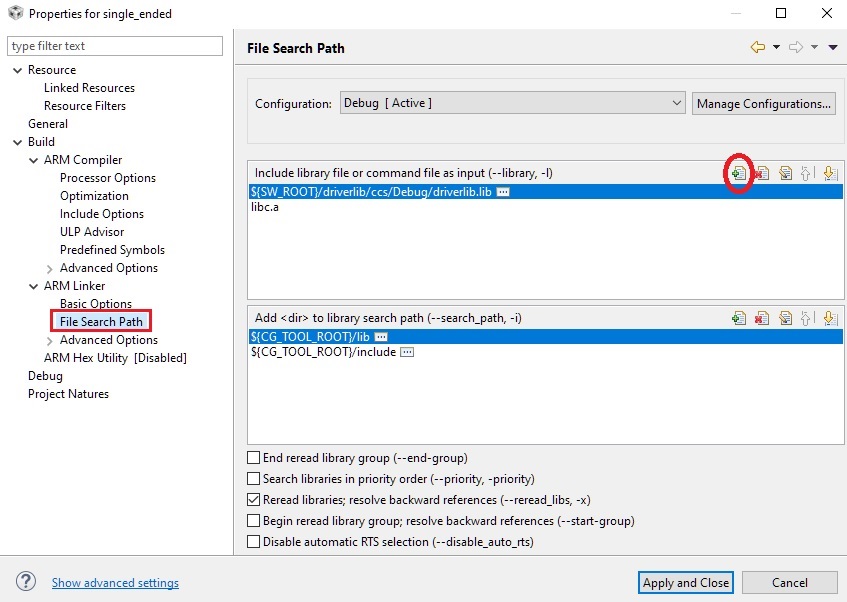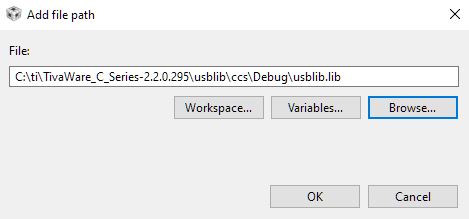SPMU373A March 2021 – August 2022 TM4C1230C3PM , TM4C1230D5PM , TM4C1230E6PM , TM4C1230H6PM , TM4C1231C3PM , TM4C1231D5PM , TM4C1231D5PZ , TM4C1231E6PM , TM4C1231E6PZ , TM4C1231H6PGE , TM4C1231H6PM , TM4C1231H6PZ , TM4C1232C3PM , TM4C1232D5PM , TM4C1232E6PM , TM4C1232H6PM , TM4C1233C3PM , TM4C1233D5PM , TM4C1233D5PZ , TM4C1233E6PM , TM4C1233E6PZ , TM4C1233H6PGE , TM4C1233H6PM , TM4C1233H6PZ , TM4C1236D5PM , TM4C1236E6PM , TM4C1236H6PM , TM4C1237D5PM , TM4C1237D5PZ , TM4C1237E6PM , TM4C1237E6PZ , TM4C1237H6PGE , TM4C1237H6PM , TM4C1237H6PZ , TM4C123AE6PM , TM4C123AH6PM , TM4C123BE6PM , TM4C123BE6PZ , TM4C123BH6PGE , TM4C123BH6PM , TM4C123BH6PZ , TM4C123BH6ZRB , TM4C123FE6PM , TM4C123FH6PM , TM4C123GE6PM , TM4C123GE6PZ , TM4C123GH6PGE , TM4C123GH6PM , TM4C123GH6PZ , TM4C123GH6ZRB , TM4C123GH6ZXR , TM4C1290NCPDT , TM4C1290NCZAD , TM4C1292NCPDT , TM4C1292NCZAD , TM4C1294KCPDT , TM4C1294NCPDT , TM4C1294NCZAD , TM4C1297NCZAD , TM4C1299KCZAD , TM4C1299NCZAD , TM4C129CNCPDT , TM4C129CNCZAD , TM4C129DNCPDT , TM4C129DNCZAD , TM4C129EKCPDT , TM4C129ENCPDT , TM4C129ENCZAD , TM4C129LNCZAD , TM4C129XKCZAD , TM4C129XNCZAD
- Read This First
- 1Introduction to TivaWare SDK
- 2TivaWare Example Projects
- 3Linking Files and Libraries into a TivaWare Project in Code Composer Studio
- 4How to Debug a TivaWare Library
- 5How to Add TivaWare to an Existing CCS Project
- 6TivaWare Boot Loader
- 7Software Best Practices
- 8TM4C Resources
- 9Revision History
3.2 Linking Libraries in CCS
TivaWare example projects only include links for the TivaWare libraries relevant to the example project as provided. This means that while all projects will include a link to DriverLib, other libraries such as UsbLib or GrLib may not be linked to the project and a few steps need to be taken in order to link the library.
The library file that needs to be linked is the .lib file that is found within the library’s folder in the TivaWare installation. For this example, the usblib.lib file will be used. The .lib file for a library is a build output from when the library is compiled and can be found under usblib\ccs\Debug.
In order to add a library to an existing project, go into the Project Properties and navigate to Build → ARM Linker → File Path Search. There will be a section for ‘Include library file or command file as input’. Click the ‘Add…’ button seen circled in Figure 4-7.
 Figure 3-7 How to Add a Library Link in
CCS Project Properties
Figure 3-7 How to Add a Library Link in
CCS Project Properties
Next, click on ‘Browse…’ and navigate to the folder with the .lib file, and either select the library file and click open or just double click the file. The path displayed should look similar to Figure 4-8. Click ‘OK’ and then ‘Apply and Close’ for the project properties and the library will be linked with the CCS project.
 Figure 3-8 File Path to the UsbLib Libary
File
Figure 3-8 File Path to the UsbLib Libary
File
While not necessary, the linked location can be edited further to use the $SW_ROOT linked resource path. Just replace the TivaWare directory path with $SW_ROOT as seen with how the the driverlib.lib link path is displayed on Figure 4-7.